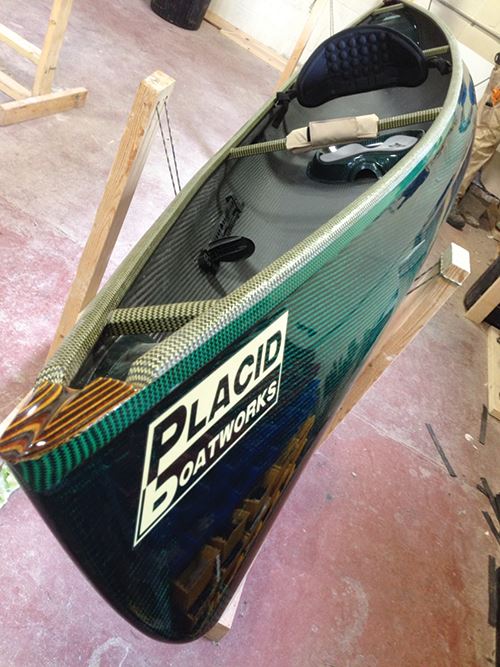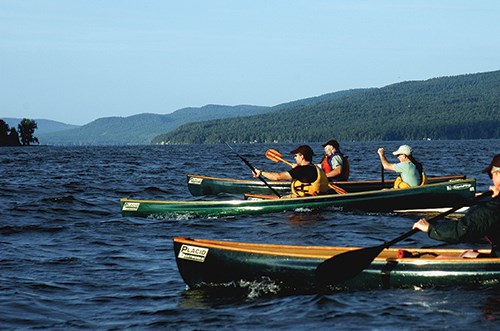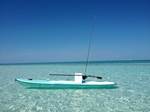Back-country boating: Carbon fiber Adirondack pack canoe
Placid Boatworks (Lake Placid, NY, US) makes modern composite versions of classic, but relatively heavy, Adirondack pack canoes, using vacuum-infused carbon fiber. Here's how.
For the true backcountry explorer, a strong but lightweight boat is essential — one that can easily be portaged lake-to-lake and stream-to-stream. To meet that need, Placid Boatworks (Lake Placid, NY, US) makes modern composite versions of classic, but relatively heavy, Adirondack pack canoes. At 3.6m long, its Spitfire Ultra single-seater can be double-blade paddled, like a kayak, and it weighs less than 8 kg (traditional pack canoes weigh 20 kg or more) yet can carry more than 136 kg.
“We wanted to create a solo canoe with the right balance between very light weight and ruggedness,” says Placid owner Joe Moore, who credits success to vacuum infusion processing and high-performance reinforcements from A&P Technology Inc. (Cincinnati, OH, US). “We’ve applied large-vessel technology to a very small boat.”
The canoe’s outer hull incorporates a single ply of A&P’s Bimax carbon fiber biaxial (±45°) fabric, backed by a plain-weave carbon fabric for the inside hull. A&P’s QISO slit carbon fiber braid [0°/+60°/-60°] is used as a reinforcing layer between the Bimax and plain weave. Additional Bimax is incorporated into the bottom of the canoe. A&P’s Sharx biaxial hybrid (carbon and aramid fiber) sleeving material, wrapped around Divinycell closed-cell foam from DIAB Americas LP (DeSoto, TX, US), forms the canoe’s gunwales.
The dry reinforcements are layed up in a female composite mold, built in-house, which is first sprayed with gel coat; white gel coat is used below the water line, and transparent gel coat everywhere else. Layup includes peel ply and resin flow mesh supplied by Airtech International Inc. (Huntington Beach, CA, US). Placid employs a reusable silicone vacuum bag and reusable vacuum plenums around the mold perimeter. The infusion resin is 8084 epoxy vinyl ester manufactured by Ashland Performance Materials(Columbus, OH, US). The canoe’s four foam-cored thwarts, or crossmembers, are infused separately. Parts are cured at room temperature. After demolding the hull, Placid attaches thwarts and a composite seat with an adjustable back support and foot pegs, using methyl methacrylate adhesive supplied by Plexus(Danvers, MA, US). Moore says infusion ensures a “clean shop,” reduces resin waste and produces consistent parts with very low void content and a better fiber/resin ratio than can be achieve with hand layup.
Related Content
-
Epoxy-based structural film adhesive intended for aerospace, MRO
CAMX 2023: Park Aerospace is presenting its new aerospace-grade film adhesive material Aeroadhere FAE-350-1, in addition to other product offerings intended for aerospace, defense and spacecraft.
-
Materials & Processes: Tooling for composites
Composite parts are formed in molds, also known as tools. Tools can be made from virtually any material. The material type, shape and complexity depend upon the part and length of production run. Here's a short summary of the issues involved in electing and making tools.
-
CAMX 2022 exhibit preview: Conductive Composites
Conductive Composites expands its portfolio of multifunctional electrically conductive composite materials with a new line of NiShield nonwovens and NiBond electrically conductive two-part structural epoxy adhesive.















